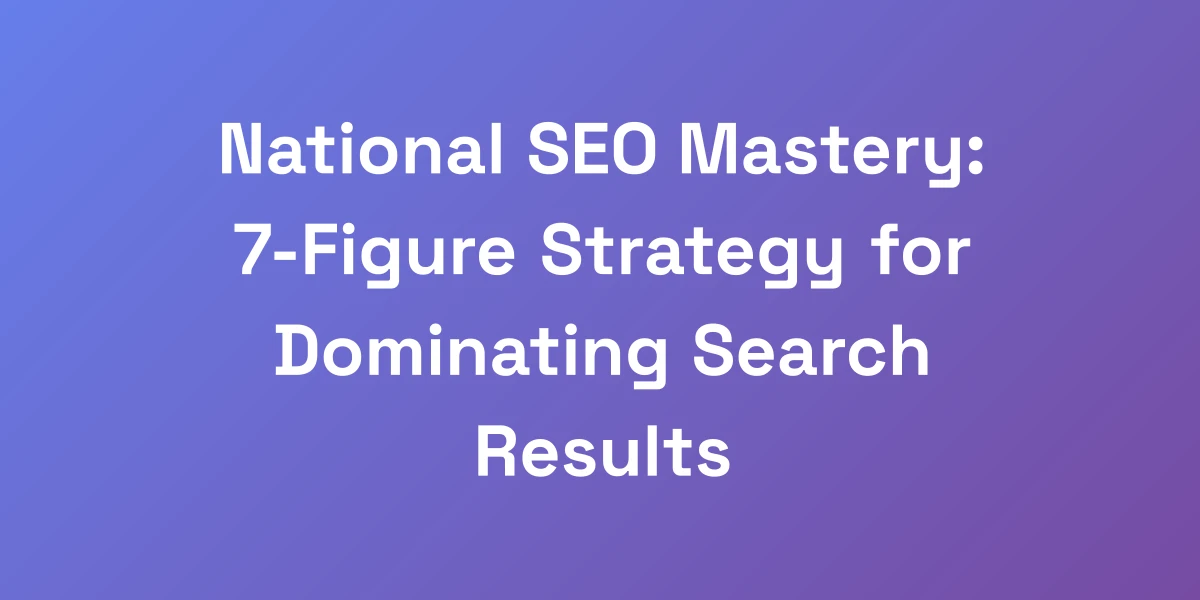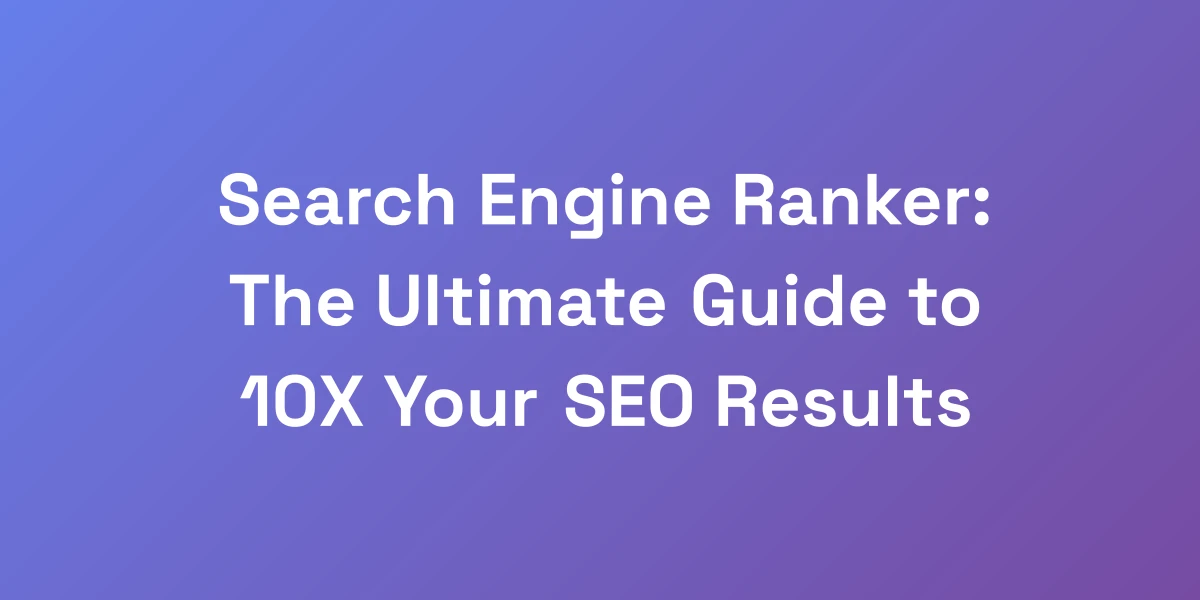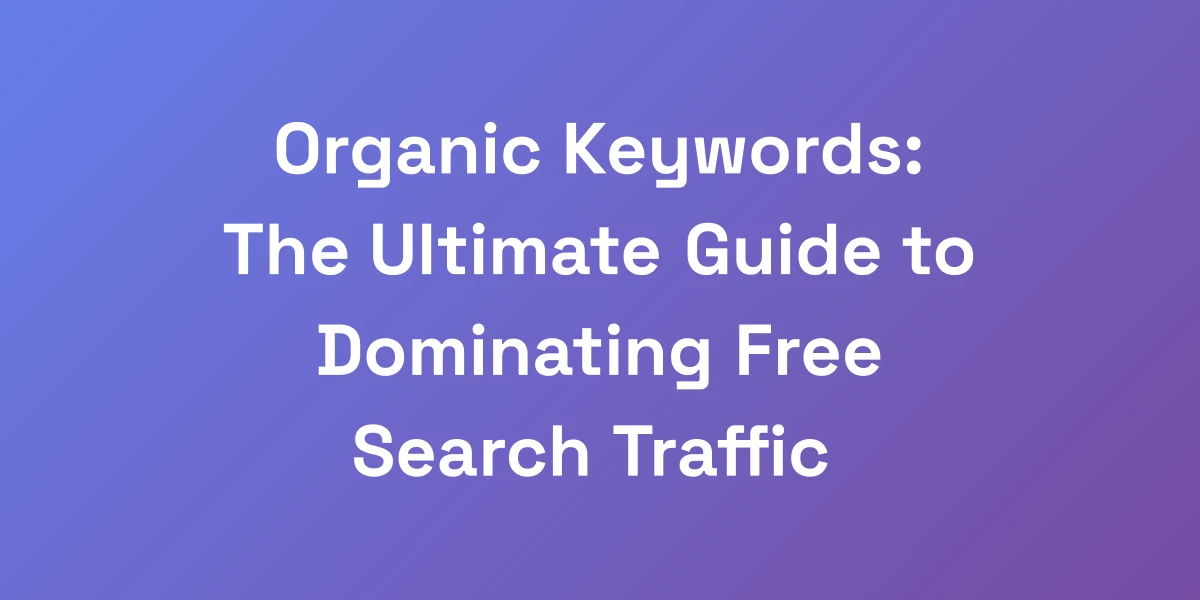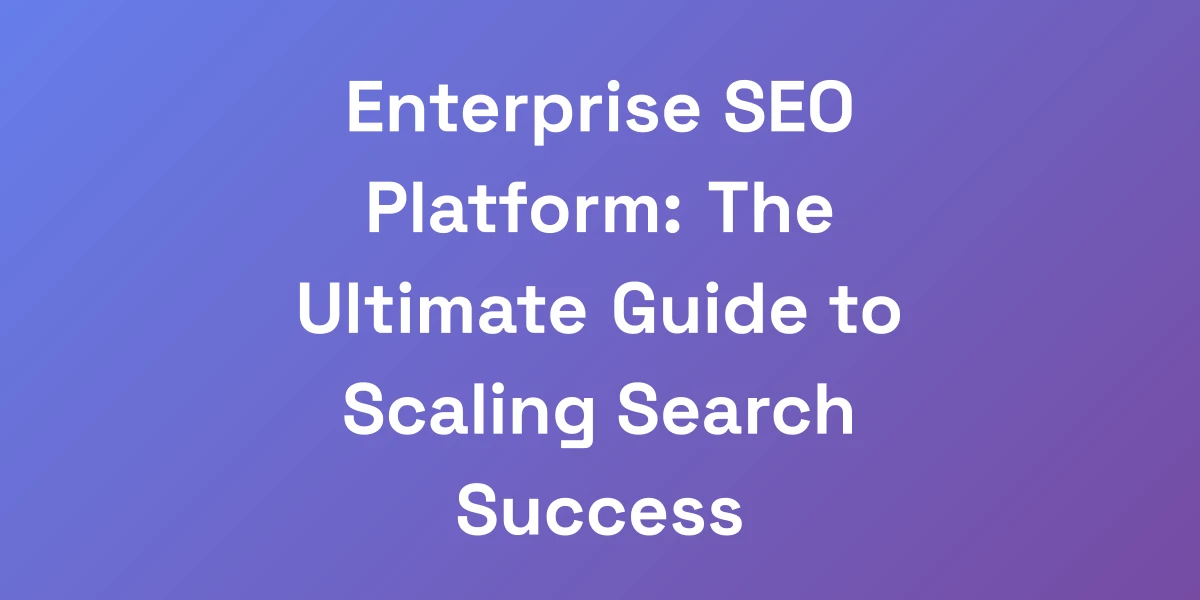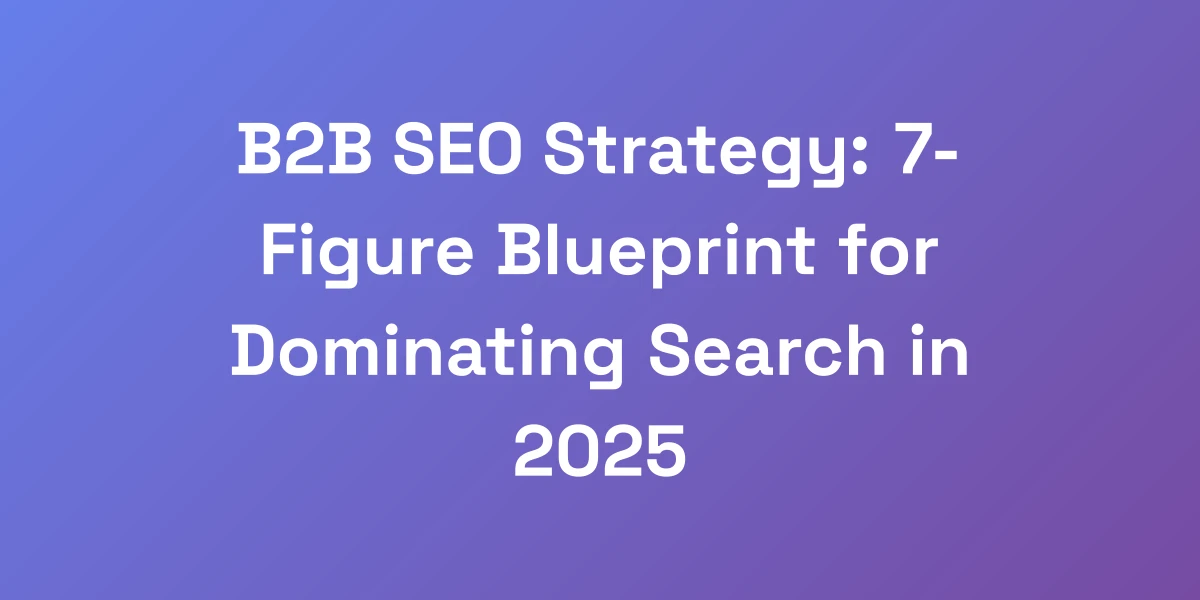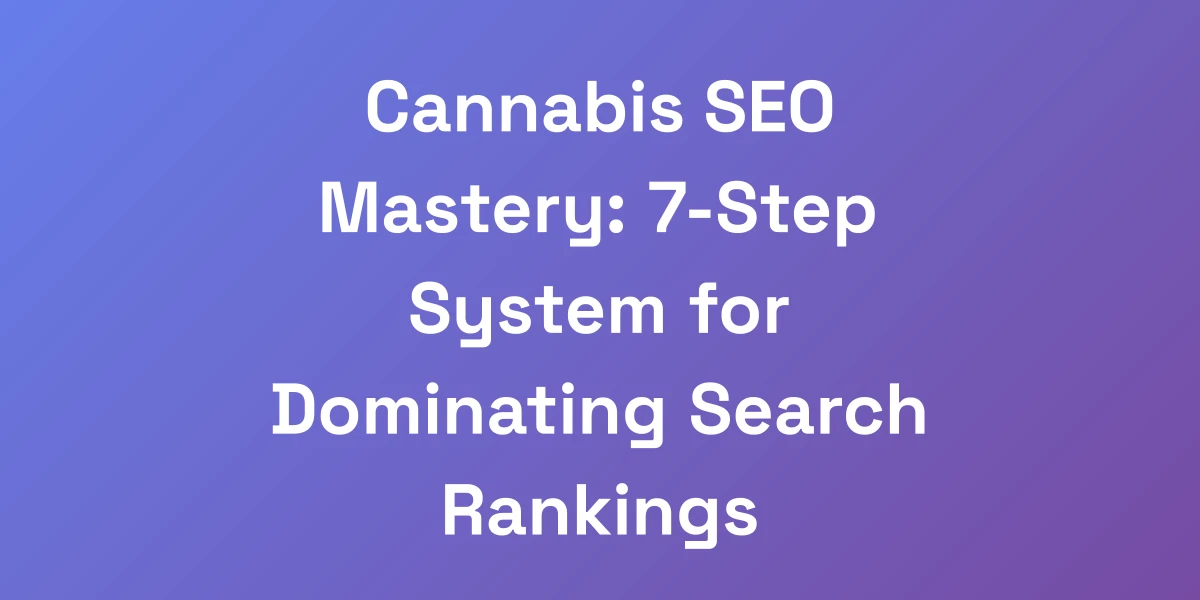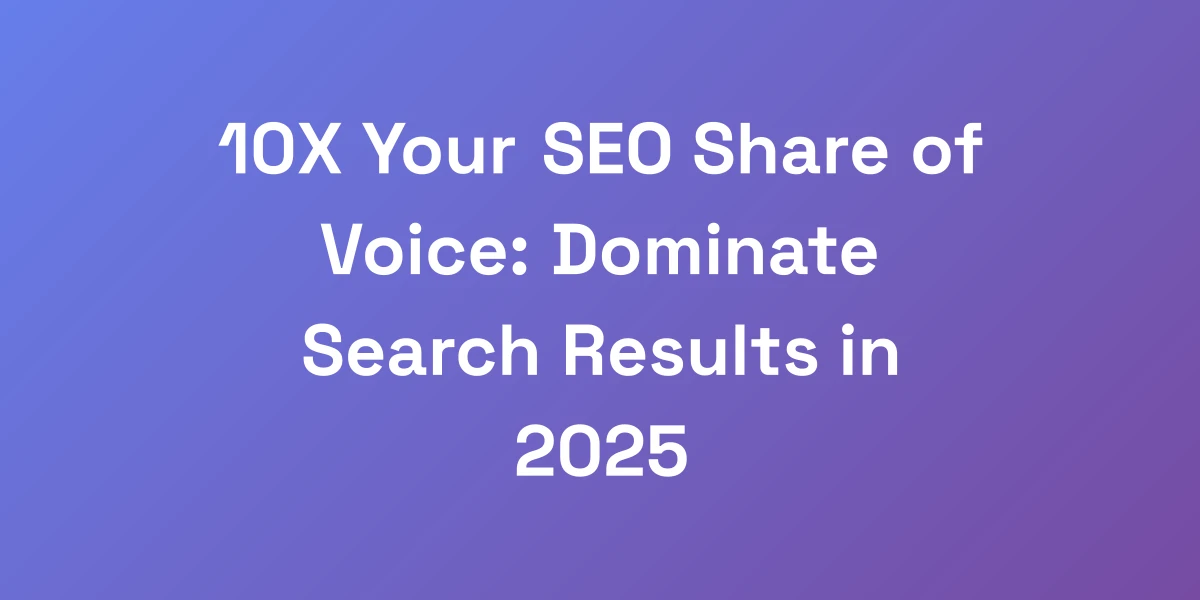
SEO + Paid Search: The $100M Secret to Dominating Search Results
Mar 29, 2025 | By [email protected]
Why Most Businesses Fail at Search Marketing (And How to Fix It)
Let me hit you with some truth: 90% of businesses are leaving millions on the table by treating SEO and paid search as separate entities. We’ve seen it time and again—companies struggling to maximize their online presence because they’re not leveraging both strategies in harmony.
The real challenge? Combining these two powerful tools to create a unified search strategy that not only boosts visibility but also drives substantial revenue. Think about it—while your competitors are playing checkers with either SEO or PPC, you’re about to play chess with both. The SEO vs PPC statistics don’t lie, and we’re here to show you exactly how to dominate your market using this powerful combination.
The Hidden Cost of Channel Isolation
Isolating SEO and PPC is like running two separate marathons without a clear finish line. Each channel demands its resources, attention, and strategy, often leading to redundant efforts and missed opportunities.
When businesses treat these channels separately, they miss out on the synergy that comes from integrating data and insights. For instance, PPC can inform your SEO keyword strategy, while SEO can provide valuable insights into organic search trends that can enhance your PPC campaigns. Implementing cross-channel attribution strategies is essential for unified insights.
- Redundant Spending: Overlapping keyword targeting can result in unnecessary costs.
- Missed Insights: Separate channels mean separate data pools, leading to fragmented insights.
- Inconsistent Messaging: Different strategies can result in conflicting messages to your audience.
The Compounding Effect of Integrated Search
Integrating SEO and PPC creates a compound effect that amplifies your overall search performance. This synergy not only improves visibility but also enhances credibility and trust with your audience.
For example, appearing in both organic and paid search results can dominate the SERP real estate, making it more likely for users to click on your links. This increased presence reinforces your brand’s authority and drives higher click-through rates.
- Enhanced Visibility: Dominating the SERP increases your chances of clicks.
- Improved Brand Authority: Consistent presence builds trust and credibility.
- Better Insights: Combining data from both channels leads to more informed strategies.
Real Numbers: What You’re Actually Losing
Let’s get real—what’s the cost of not integrating SEO and PPC? Businesses are potentially missing out on a significant portion of their target audience and revenue.
Consider this: SEO typically offers a 25% higher ROI due to sustained organic traffic, while PPC can yield up to a 200% ROI through immediate visibility. By not leveraging both, you’re essentially limiting your revenue streams and leaving money on the table. Dive deeper into the latest PPC statistics to understand the full impact.
- Missed Revenue Opportunities: Limited visibility means fewer clicks and conversions.
- Higher Customer Acquisition Costs: Relying solely on one channel can increase your overall acquisition costs.
- Stagnant Growth: Integrated strategies fuel scalable growth that isolated channels cannot sustain.
The New Paradigm of Search Dominance
The landscape of search marketing is evolving. To stay ahead, businesses must adopt a holistic approach that seamlessly blends SEO and PPC. This new paradigm focuses on creating a unified strategy that leverages the strengths of both channels, much like digital marketing for small businesses.
Imagine your SEO efforts creating a strong foundation of organic traffic, while PPC drives targeted, immediate traffic. Together, they enhance each other, leading to a more robust and resilient search marketing strategy.
- Unified Strategy: Combining efforts for a cohesive approach.
- Resilient Marketing: Diversifying traffic sources reduces dependency on a single channel.
- Scalable Growth: Leveraging both channels supports sustainable and scalable business growth.
Quick Wins vs. Long-term Assets
Balancing quick wins from PPC with the long-term benefits of SEO is essential for a sustainable search strategy. PPC offers immediate visibility and quick results, making it perfect for short-term campaigns and fast conversions.
On the other hand, SEO is a long-term investment that builds authority and drives organic traffic over time. When combined, these strategies provide a comprehensive approach that addresses both immediate needs and future growth.
- Immediate Results: PPC drives quick traffic and conversions.
- Long-term Growth: SEO builds a lasting foundation of organic traffic.
- Balanced Strategy: Combining quick wins with long-term assets ensures steady growth.
The Ultimate Framework for Combining SEO and Paid Search
Listen carefully, because this is where most people get it wrong. Your search strategy isn’t about choosing between SEO and paid search—it’s about creating a symbiotic system that multiplies your results. We’ve developed a framework that’s generated consistent results across multiple industries, similar to digital marketing for agencies. The key is understanding that every dollar spent on paid search can actually amplify your SEO efforts, and vice versa. Let us break down this million-dollar framework for you.
The 80/20 Rule of Search Marketing
Focus on the 20% of efforts that drive 80% of the results. Identify the keywords and strategies that yield the highest ROI and allocate your resources accordingly.
- Identify High-Impact Keywords: Use data to find keywords that drive the most traffic and conversions.
- Prioritize Efforts: Allocate resources to strategies that offer the highest returns.
- Optimize for Efficiency: Streamline your efforts to focus on what works best.
Data Synchronization Between Channels
Integrate data from both SEO and PPC using SEO optimization automation tools to gain a comprehensive understanding of your performance. This synchronization allows for better decision-making and more effective strategies.
- Unified Analytics: Combine data from Google Analytics, Search Console, and PPC platforms.
- Enhanced Reporting: Create reports that reflect the performance of both channels together.
- Informed Decisions: Use combined data to optimize both SEO and PPC strategies.
Budget Allocation Matrix
Create a matrix that outlines how to allocate your budget between SEO and PPC based on performance, competition, and business goals.
- Performance-Based Allocation: Allocate more budget to high-performing channels.
- Competitive Analysis: Adjust budgets based on competitor activity and market conditions.
- Goal-Oriented Spending: Align budget allocation with specific business objectives.
Cross-Channel Keywords Strategy
Develop a cohesive keyword strategy that leverages insights from both SEO and PPC. This approach ensures that your keywords are optimized for both organic and paid search.
- Keyword Research: Conduct comprehensive keyword research to identify high-value keywords.
- Shared Insights: Use PPC data to inform SEO strategies and vice versa.
- Targeted Optimization: Optimize keywords for maximum impact across both channels.
Conversion Path Optimization
Optimize the entire conversion path, from initial search to final conversion, by aligning SEO and PPC strategies to support seamless user journeys.
- User Intent Alignment: Ensure that content and ads meet user intent at every stage.
- Optimized Landing Pages: Create landing pages that support both organic and paid traffic.
- Tracking and Analysis: Continuously monitor and optimize the conversion path for better results.
ROI Multiplication Tactics
Implement strategies that maximize the ROI of both SEO and PPC by leveraging their strengths and mitigating their weaknesses.
- Retargeting: Use PPC to retarget users who engaged with your organic content.
- Content Amplification: Promote high-performing organic content through PPC campaigns.
- Performance Refinement: Continuously analyze and refine strategies based on combined performance data.
Advanced Tactics That 99% of Your Competitors Don’t Know
Here’s where we separate the pros from the amateurs. Most marketers are still using outdated playbooks from 2015. But the game has changed. We’re going to show you cutting-edge strategies that combine the best of both worlds. These aren’t theory—these are battle-tested tactics that have generated millions in revenue for our clients. The best part? Your competition won’t even know what hit them.
SERP Real Estate Domination
Dominate the SERP real estate by ensuring your brand appears in multiple sections of the search results. This includes organic listings, paid ads, and featured snippets.
- Top Positions: Secure top organic rankings and prioritized ad placements.
- Featured Snippets: Optimize content to appear in featured snippets for increased visibility.
- Local Listings: Enhance local SEO to dominate local search results.
Intent-Based Channel Selection
Choose the right channel based on user intent. Understand when to leverage SEO for informational queries and PPC for transactional intents.
- Informational Queries: Use SEO to capture users seeking information.
- Transactional Intents: Deploy PPC to target users ready to convert.
- Mixed Intent: Utilize both channels to cover all stages of the user journey.
Dynamic Budget Shifting
Flexibly allocate your budget between SEO and PPC based on real-time performance data and market conditions.
- Performance Monitoring: Continuously track the performance of both channels.
- Adaptive Allocation: Shift budgets dynamically to capitalize on high-performing areas.
- Market Responsiveness: Respond quickly to changes in the market environment.
Competitive Gap Analysis
Identify and exploit gaps in your competitors’ strategies to gain a competitive edge in both SEO and PPC.
- Keyword Gaps: Find keywords your competitors are missing and target them.
- Content Gaps: Create content that addresses areas where competitors are lacking.
- Ad Strategy Gaps: Analyze competitors’ ad strategies and develop superior approaches.
Attribution Modeling Secrets
Use advanced attribution models to accurately measure the impact of SEO and PPC on conversions.
- Multi-Touch Attribution: Assign value to multiple touchpoints in the conversion path.
- Data-Driven Models: Implement data-driven attribution to understand the true impact of each channel.
- Performance Insights: Use attribution data to refine and optimize strategies.
Automated Optimization Systems
Leverage automation tools to streamline and enhance your SEO and PPC efforts.
- AI-Powered Tools: Use AI to manage and optimize campaigns efficiently.
- Automated Bidding: Implement automated bidding strategies to maximize ROI.
- Continuous Optimization: Utilize tools that continuously optimize based on real-time data.
Implementation: Your 90-Day Action Plan
Theory without execution is worthless. That’s why we’re giving you a concrete, step-by-step plan to implement everything we’ve covered. This isn’t some vague strategy—it’s a detailed blueprint that’s worked for businesses from startups to Fortune 500 companies. We’re talking about specific actions, metrics, and milestones that will transform your search presence in the next 90 days.
Week-by-Week Implementation Guide
Break down the implementation process into manageable weekly tasks to ensure steady progress.
- Weeks 1-2: Conduct comprehensive keyword research and competitive analysis.
- Weeks 3-4: Develop and optimize content for SEO and create targeted PPC campaigns.
- Weeks 5-6: Integrate data from both channels and set up unified analytics.
- Weeks 7-8: Launch integrated campaigns and begin dynamic budget allocation.
- Weeks 9-10: Monitor performance, conduct gap analysis, and adjust strategies accordingly.
- Weeks 11-12: Scale successful strategies and continue optimization based on performance data.
Key Performance Indicators
Define and track key performance indicators (KPIs) to measure the success of your integrated search strategy.
- Organic Traffic: Monitor the increase in organic search traffic.
- Paid Traffic: Track the performance and ROI of PPC campaigns.
- Conversion Rates: Measure the effectiveness of both channels in driving conversions.
- Cost per Acquisition: Analyze the cost efficiency of your marketing efforts.
- Overall ROI: Calculate the combined ROI of SEO and PPC strategies.
Resource Allocation Strategy
Ensure that you have the right resources in place to execute your 90-day plan effectively.
- Team Roles: Assign specific roles and responsibilities to team members.
- Budget Allocation: Allocate your budget based on the SEO vs PPC: which is best for your budget.
- Tools and Technologies: Utilize the latest tools for SEO and PPC automation.
- Training and Development: Invest in training your team to master integrated search strategies.
Common Pitfalls to Avoid
Be aware of the common mistakes that can derail your integrated search strategy and know how to avoid them.
- Lack of Coordination: Ensure that SEO and PPC teams are working in sync.
- Ignoring Data Insights: Use data to inform your strategies and make informed decisions.
- Overlooking User Intent: Focus on understanding and meeting user intent across both channels.
- Inadequate Tracking: Implement robust tracking mechanisms to measure performance accurately.
- Failing to Adapt: Be flexible and ready to pivot your strategies based on performance data.
Scaling and Optimization
After the initial 90 days, focus on scaling your efforts and continuously optimizing your strategies for maximum impact.
- Expand Keyword Targets: Continuously add new high-value keywords to your campaigns.
- Enhance Content: Regularly update and optimize content to maintain high rankings, potentially through autoblogging techniques.
- Advanced Testing: Implement A/B testing to refine your PPC ads and landing pages.
- Automation: Leverage automation tools to handle repetitive tasks and focus on strategy, as recommended in SEO for startups.
- Continuous Learning: Stay updated with the latest trends and Google algorithm updates history to keep your strategies relevant.
Conclusion
We’ve walked you through the critical reasons why most businesses fail at search marketing and how you can fix it by integrating SEO and PPC. The key takeaway? Combining these two channels creates a powerful synergy that can dramatically improve your online visibility, drive more targeted traffic, and boost your revenue.
Don’t let your competitors outplay you by sticking to outdated, isolated strategies. Implement our framework, follow the 90-day action plan, and watch as your search presence transforms, paving the way for long-term success and dominance in your market.
Ready to take your search marketing to the next level? Start integrating SEO and PPC today and unlock the full potential of your digital marketing strategy. Have questions or need personalized advice? Let us know in the comments below. We’re here to help you dominate the search results and achieve your business goals.
